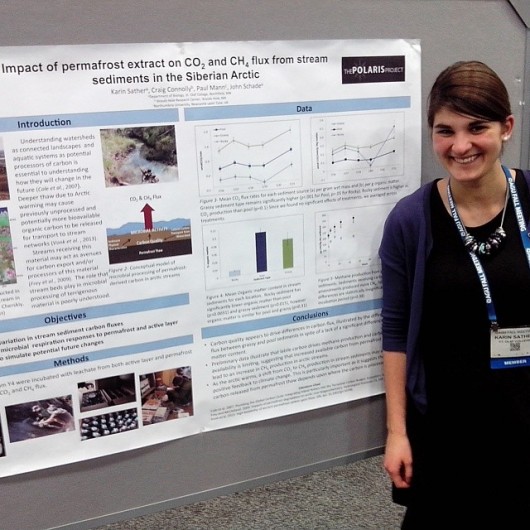With two more days left in San Fransisco and a poster presentation successfully completed, I have taken some time to reflect on my experience at the American Geophysical Union’s (AGU) fall meeting. Beyond the beautiful location and the fact that it is currently 50 degrees warmer here than it is at home, I have learned a lot through my time here. As a part of Polaris, we do Arctic systems science which is vitally important to the future, but at AGU I have come to realize that we are studying a system within a greater system. I may not understand the physics of a volcano or heavy metal chemistry, yet we are all working towards the same end goal: an earth system that functions to the best of its ability.

Within the realm of Arctic system science, the voice of Polaris is strong. In Wednesday’s poster session, it was a unique opportunity to be able to point down the row of posters to Craig and Han, allowing them to broaden the story from a single poster about methane and carbon dioxide flux, to the carbon dynamics of an entire watershed. Many who stopped by for a conversation brought perspectives from other areas of the Arctic, deepening my understanding of the vast nature of the Arctic system and the carbon stored within it. Others came from tropical backgrounds and were astonished by the field work we conduct and the importance of the Arctic system within the greater earth system.
Within Polaris, we are working to link terrestrial and aquatic systems to deepen our understanding of a single watershed, but in places like AGU, we are given the tools to connect our understanding of a small arctic stream into the broader context of the global future. Food and water are vitally connected to climate, and climate is tightly linked to the Arctic.



